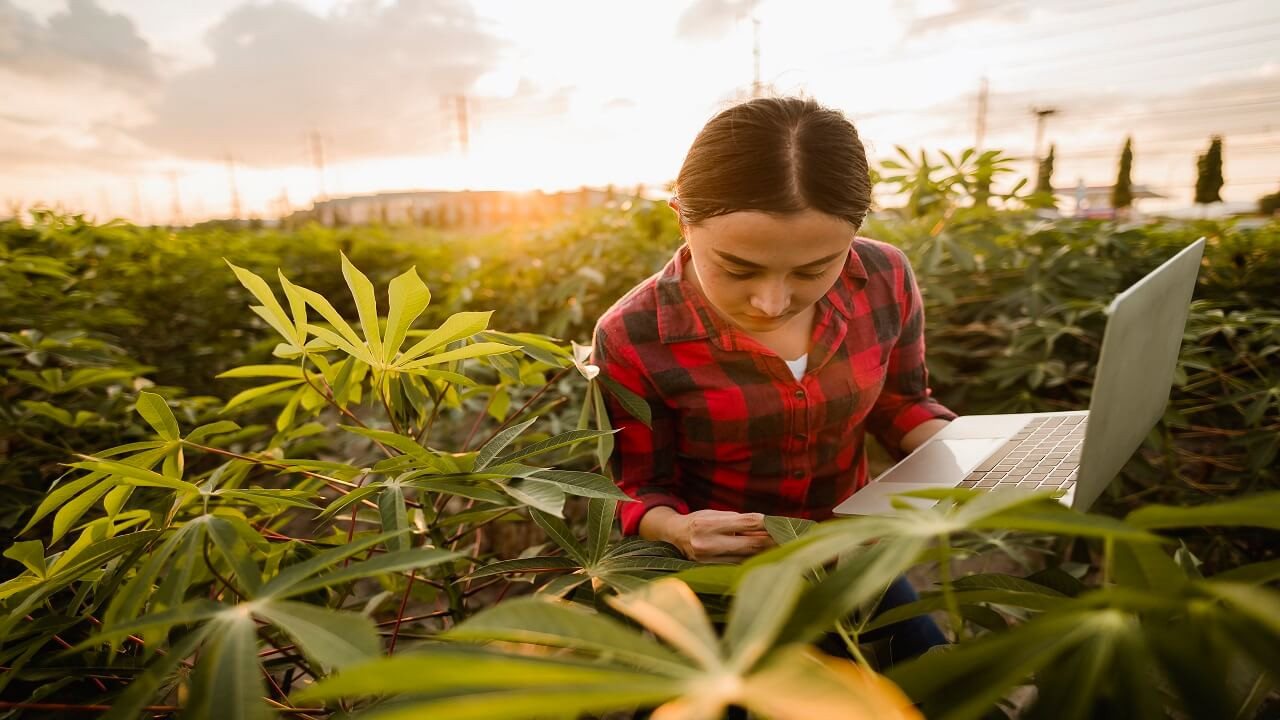
Cassava Leaf: Properties, Development and Uses
February 5, 2023, 9:57 am
Cassava leaf is one of the many parts of the cassava plant that is useful to the wellbeing of man and animals.
Cassava is a perennial shrub of the family Euphorbiaceae, cultivated mainly for its starchy roots. It is one of the most important food staples in the tropics, where it is the fourth most important source of energy. On a worldwide basis it is ranked as the sixth most important source of calories in the human diet.
Given the crop’s tolerance to poor soil and harsh climatic conditions, it is generally cultivated by small farmers as a subsistence crop in a diverse range of agricultural and food systems. Although cassava is a perennial crop, the storage roots can be harvested from 6 to 24 months after planting (MAP), depending on cultivar and the growing conditions.

In the humid lowland tropics the roots can be harvested after 6–7 months. In regions with prolonged periods of drought or cold, the farmers usually harvest after 18–24 months. Moreover, the roots can be left in the ground without harvesting for a long period of time, making it a very useful crop as a security against famine
CASSAVA LEAF
Cassava leaves are simple, formed by the lamina and petiole. The cassava leaf is lobed with palmated veins. There is generally an uneven number of lobes, ranging from three to nine (occasionally 11). Only a few cultivars are characterized by having three-lobed mature vegetative leaves, which may represent the primitive ancestral form. Leaves near the inflorescence are generally reduced in size and lobe number (most frequently three-lobed), but the one closest to the base of the inflorescence is frequently simple and unlobed.
Leaves are alternate and have a phyllotaxy of 2/5, indicating that from any leaf (leaf 1) there are two revolutions around the stem to reach the sixth (leaf 6) in the same orthostichy as leaf 1. In these two revolutions there are five successive intermediate leaves (not counting leaf 1).
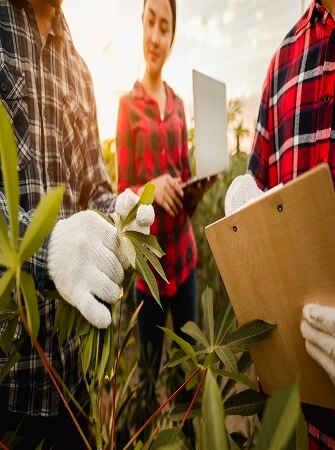
The main cassava leaf morphological and agronomic characteristics and their variation are given in the table below:
| LEAF CHARACTERISTICS | VARIABILITY |
| Morphological | |
| Apical Leaf color | Light green; dark green; green–purple; purple |
| Apical pubescence | Absent; present |
| Shape of central lobe | Ovoid; elliptic–lanceolate; obovate– lanceolate; oblanceolate; lanceolate; linear; pandurate; linear–pyramidal; linear–pandurate; linear–hostatilobada |
| Petiole color | Green–yellow; green; green–red; red-green; red; purple |
| Mature leaf color | Light green; dark green; green-purple; purple |
| Protuberance of leaf scars | No protuberance; protuberant |
| Number of lobes | 3; 5; 7; 9; 11 |
| Agronomic | |
| Petiole length |
5 – 30cm 9 – 20cm |
| Total chlorophyll | 2.18–2.86 mg g−1 leaf fresh weight |
| Central lobe length | 4 – 20cm |
| Central lobe width | 1 – 6cm |
| Number of stomata/leaf area in adaxial epidermis | 278–700 mm−2 |
| Relative area of stomata pore (% from leaf area) | 1.4 – 3.1% |
| Stipule length | 0.5 – 1.0cm |
| Leaf thickness | 100 – 120ჸm |
| DM in mature leaf | 25% |
| Fiber in mature leaf | 4.58% dry weight |
| Ash in mature leaf | 8.28% dry weight |
| Protein in mature leaf |
7.1 – 8.9% fresh weight 28.8% dry weight |
| Soluble carbohydrates |
11.36% fresh weight 44.84% dry weight |
Many of them (mainly the morphological ones) are used to characterize cultivars and may vary with environmental conditions and plant age.
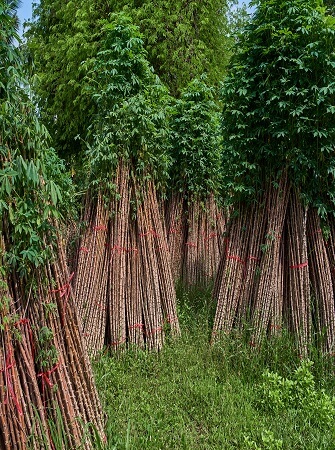
Mature leaves are glabrous and each cassava leaf is surrounded by two stipules (approximately 0.5–1.0 cm long), which remain attached to the stem when the cassava leaf is completely developed. The petiole length of a fully opened cassava leaf normally varies from 5to 30 cm, but may reach up to 40 cm.
The upper leaf surface is covered with a shiny, waxy epidermis. Most stomata are located on the lower (abaxial) surface of the leaves; only a few can be found along the main vein on the upper (adaxial) surface. Of 1500 cultivars studied, only 2% had stomata on the adaxial surface. The stomata on the upper surface are also functional and bigger than those on the undersurface. Both are morphologically paracytic, with two small guard cells surrounded by two subsidiary cells.
CASSAVA LEAF GROWTH AND DEVELOPMENT
Plant Developmental Stages
As cassava is a perennial shrub it can grow indefinitely, alternating periods of vegetative growth, storage of carbohydrates in the roots, and even periods of almost dormancy, brought on by severe climatic conditions such as low temperature and prolonged water deficit. There is a positive correlation between the total biomass and storage root biomass.
During its growth, there are distinct developmental phases. The occurrence, duration and existence of each phase depend on several factors related to varietal differences, environmental conditions and cultural practices. The initial growth (at 15-day intervals) from emergence to 150 days is presented in.
Growth at 60-day intervals during the first cycle (0–360 days after planting; DAP) is shown below:
The periods and main physiological events during the growth of a cassava plant under favorable conditions in the field can be visualized in these figures and are summarized below:
Beginning of Cassava Leaf Development and Formation of Root System – 15–90 DAP
• The true leaves start to expand around 30 DAP when the photosynthetic process starts to contribute positively to plant growth.
• Until 30 DAP, shoot and root growth depends on the reserves of the stem cutting.
• The fibrous roots start to grow, replacing the first adventitious roots. These new roots start to penetrate in the soil, reaching 40–50 cm deep, and function in water and nutrient absorption.
• Few fibrous roots (between three and 14) will become storage roots, which can be distinguished from fibrous roots from 60 to 90 DAP. At 75 DAP the storage roots represent 10–15% of total dry matter (DM)
Development of stems and leaves (canopy establishment) – 90–180 DAP
• Maximum growth rates of cassava leaves and stems are achieved in this period, and the branching habit and plant architecture is defined
• From 120 to 150 DAP the leaves are able to intercept the most of the incident light on canopy.
• Maximum canopy size and maximum DM partition to leaves and stems are accomplished
• The storage root continues to bulk.
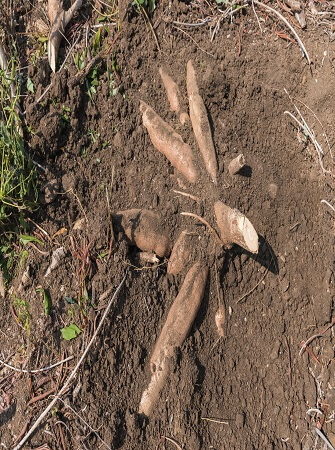
• The most active vegetative growth for cassava occurs in this period
Cassava Leaf Area Development
The analyses of crop growth and yield are usually evaluated on the basis of two parameters: leaf area index (LAI), i.e. leaf area per unit ground area, and net assimilatory rate (NAR), i.e. the rate of DM production per unit leaf area.
In cassava a positive correlation between the cassava leaf area or leaf area duration and yield of storage roots has been reported, indicating that leaf area is crucial in determining crop growth rate and the storage bulking rate of cassava.
For cassava the leaf area per plant depends on the number of active apices (branching pattern), the number of leaves formed/apex, leaf size and leaf life. Given that there are significant varietal variations and influence of environmental conditions, it is important to characterize the development of cassava leaf area and its components.
After leaf emergence (folded, 1 cm long) and under normal conditions, the cassava leaf reaches its full size on days 10–12. Leaf life (from emergence to abscission) depends on cultivar, shade level, water deficit and temperature. It ranges from 40 to 210 days, but is commonly 60–120 days.
There are marked differences in cassava leaf size among the different cultivars, and the size varies with the age of the plant. The leaves produced from 3 to 4 MAP are those that become the largest; maximum total cassava leaf area is reached from 4 to 5 MAP.
Cassava leaf size is influenced by changing the branching pattern. Larger leaves are produced when the number of active apices is reduced. The rate of leaf formation decreases with plant age and is lower at low temperatures
Cassava Cyanide Content
All cassava organs, except seeds, contain cyanogenic glucoside (CG). Cultivars with < 100 mg kg−1 fresh weight (FW) are called ‘sweet’ while cultivars with 100–500 mg kg−1 are ‘bitter’ cassava. The most abundant CG is linamarin (85%), with lesser amounts of lotaustralin. Total CG concentration depends on cultivar, environmental condition, cultural practices and plant age.
Linamarin, which is synthesized in the cassava leaf and transported to the roots, is broken down by the enzyme linamarase, also found in cassava tissues. When linamarin is hydrolysed, it releases HCN, a volatile poison for humans; but some cyanide can be detoxified by the human body. In intact roots the compartmentalization of linamarase in the cell wall and linamarin in cell vacuoles prevents the formation of free cyanide.
Upon processing, the disruption of tissues ensures that the enzyme comes into contact with its substrate, resulting in rapid production of free cyanide via an unstable cyanhydrin intermediary. Juice extraction, heating, fermentation, drying or a combination of these processing treatments aid in reducing the HCN concentration to safe levels.
CASSAVA LEAF USES
As Animal Feed
Cassava leaves are used to provide nutrition to farm animals. Dry cassava leaf is a common animal feed. Dry cassava leaf meal (also known as “cassava hay”) is usually obtained by cutting the plant tops at 2.5 to 3-month intervals during the cassava growth cycle. The best quality foliage meal contains a large proportion of leaves and only very young stems, and is obtained from plants or shoots that are less than three months old.
After harvesting, the foliage is chopped and spread out on a concrete floor for sun-drying. The moisture content needs to be reduced from about 70% to 12 to 14% so that the foliage can be milled and stored.
Owing to its high fiber content, cassava foliage meal is suitable mainly for ruminants. Research has shown how supplementation with 1 to 2 kg of cassava hay per animal per day increases the milk yields of dairy cows and boosts levels of thiocyanate in the milk, which may enhance milk quality and storability. Condensed tannins in the foliage meal also reduces gastro-intestinal nematodes, indicating that the meal may act as an anti-helminthic agent.
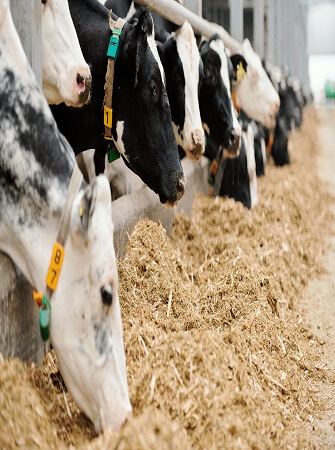
For non-ruminants, dry cassava foliage meal is best limited to 6 to 8% of the feed for growing pigs and to less than 6% of that for broilers. In broilers, the inclusion of cassava foliage meal is useful mainly as a natural pigmenter – the high content of xanthophyll pigments (500-600 mg/kg) improves the pigmentation of skin in broilers and that of egg yolks.
As Food for Humans
Cassava leaves also serve as food in several cultures of the world. Cassava leaf food can be prepared by removing the hard petioles, then pounding the blades and young petioles with a pestle and mortar, and boiling the resulting pulp for about 30 to 60 minutes. That process eliminates cyanogens and makes the leaves safe to eat.
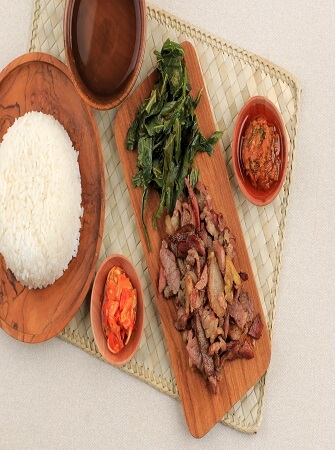
Are you interested in starting a business that extracts value from cassava? Then get our cassava farming and processing business plan today which comes with access to online training, structural design drawings, business and financial plans that will show you how to start a successful and profitable business that processes cassava into garri, flour, starch and chips.
To make payment online for our cassava farming and processing business plan go here. And if you want to make payment offline, send an email to agsolutions@agricdemy.com
REFERENCES
Cassava Botany and Physiology by Alfredo Augusto Cunha Alves
CIAT (1984) Morphology of the Cassava Plant: Study Guide
Descritores Morfológicos e Agronômicos para a Caracterização de Mandioca (Manihot esculenta Crantz) by Fukuda, W.M.G. and Guevara, C.L.
Tuber Crops by Ghosh, S.P., Ramanujam, T., Jos, J.S., Moorthy, S.N. and Nair, R.G.
Composición química de la raíz y de la hoja de algunas variedades de yuca Manihot. Turrialba by Barrios, E.A. and Bressani, R.
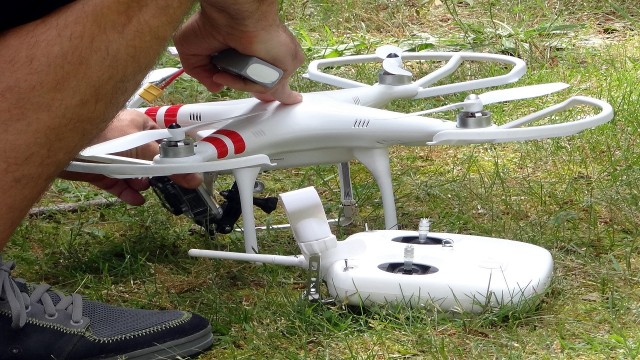

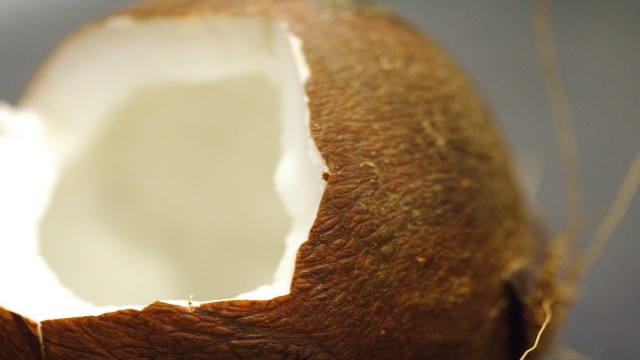
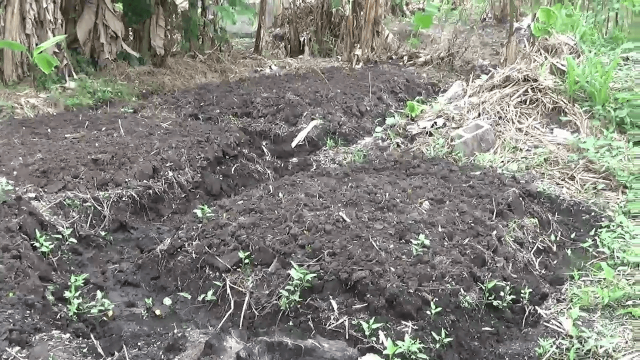
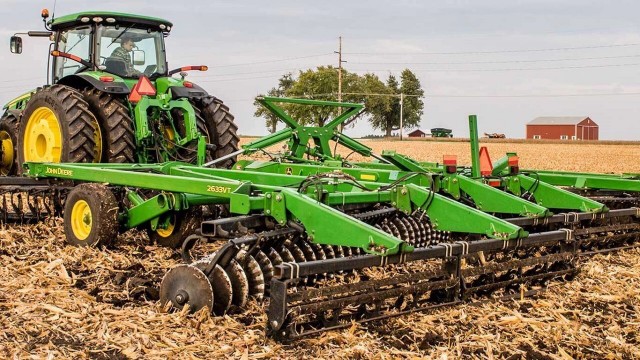


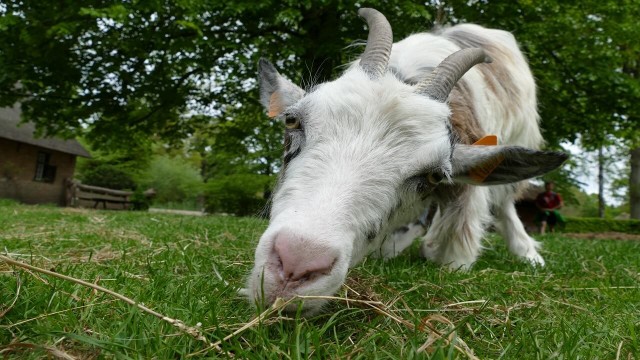




Share This Article: